In the process from the supplier to the consumer, as well as between the intermediate links of the trade chain, the goods are exposed to a wide variety of risk situations, the implementation of which can lead to damage or even irreparable loss.
Although today all the efforts of carriers are aimed at ensuring the safety of transported objects, it is impossible to completely exclude the possibility of adverse events. In this case, cargo insurance is a good help in protecting property interests.

What is cargo insurance?
Under cargo insurance is understood a type of property insurance, the main purpose of which is to protect the interests of the owner of the moved object from possible transport risks during its passage along the route from the sender to the recipient. Here we are talking about various transportations, including both domestic and international. Four main types should be identified, which form the transport insurance sub-sectors:
- Automotive.
- Rail.
- Aerial.
- Water.
It should be noted that compulsory cargo insurance is not currently provided for in our country by law. It is carried out purely on a voluntary basis.
The risks associated with cargo insurance are completely dependent on the type of vehicle, its technical condition, weather and general climatic conditions of the region in which it will be operated. Despite the abundance of possible unpleasant situations that are often encountered along the way, not all of them can be insured. Only those risks can become insurance, the probability of occurrence and future damage from which can be measured in monetary terms.
Contract Highlights

A person who decides to insure their cargo must contact the appropriate company with this problem before sending it to their destination. Cargo insurance agreement is the main document that initiates legal relations between the parties and describes the procedure for their interaction. It should also contain the determining conditions, the absence of which in the content cancels the recognition of it by a property insurance contract, namely:
- An agreement of the parties on the determination of a specific property or material interests as an insurance object.
- The list of insurance claims.
- The amount of the insured amount.
- Agreed validity periods.
An important nuance of property insurance during transportation is the setting of the deductible, which represents a certain maximum level of material damage. The presence of this cancels the obligations of the insurer under the contract. In other words, if the total cost of losses is less than the indicator agreed upon by the parties, no compensation is paid. The deductible can be fixed in the form of a specific amount of cash or in the form of a percentage of the total cost of insurance. It can also be:
- Conditional. Provides compensation for damage above the deductible.
- Unconditional. When an insured event occurs, payments are made net of its value.
A contract for cargo insurance may stipulate that the insurer has the right to subrogate - the ability to present material claims to third parties, including those guilty of causing damage. Such a right can be exercised by him only after making all payments due to the insured. An example is the proven damage or loss of transported property or part of it due to the fault of the carrier.
During the term of the contract, any significant events may occur that ensure a change in the degree of risk. In this case, a review of its terms is possible. For this reason, the policyholder, having learned about the incident, is obliged to inform the insurer as soon as possible.
Common Risks
For the entire time that insurance protection practices for transported property have been applied in the world, types of insurance have been developed and are actively used, for each of which an appropriate contract can be concluded. These are the conditions providing for the liability of the insurer for:
- All possible risks. In this situation, the policy guarantees protection of property interests in a general accident. It involves damage or loss of all or part of the cargo for any reason, except in cases when the policyholder has malicious intent or negligence in relation to the transported object, the latter has special characteristics, as well as the onset of military risks and radiation exposure. The list of exceptions for a particular contract is determined by the insurer.
- Private accident. The opposite principle works here: the contract describes risk situations, the occurrence of which is subject to insurance protection. Payments should be made in case of damage or loss of all or part of the property as a result of the occurrence of the agreed circumstances.
- Lack of liability for damage, except in the event of a crash. The principle of concluding such an agreement is similar to the previous version. However, in this case, the cargo insurance policy implies indemnification only in a situation of absolute loss of transported property or part thereof. Usually, this is used to insure used electronic equipment in this way, since this approach removes the insurer's responsibility for any problems already existing at the time of dispatch.
The last two types of insurance, based on a listing of specific risks, are less extensive than the expensive first. In the vast majority of cases, the conclusion of the contract is carried out precisely on the terms of covering all possible risks.
Lump sum and periodic insurance
Duration of Contracts may be different. Depending on these conditions, one-time and periodic cargo insurance are distinguished. One-time transportation is a standard case where an agreement with a validity period of 30-60 days from the moment the funds are credited to the insurer's account provides for insurance of one specific transportation.
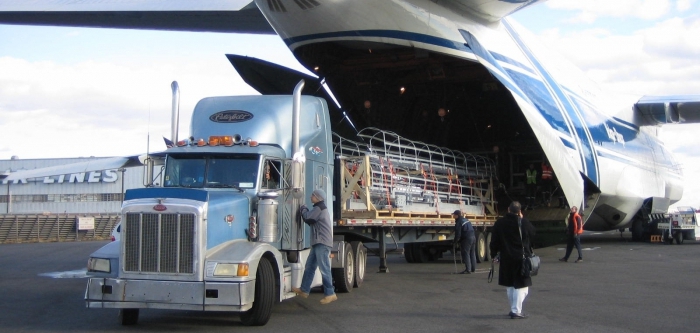
When insuring periodic deliveries, one contract (usually an annual one) protects homogeneous consignments. The insurer in this case is obliged to inform the insurer about the next carriage, and that, in turn, issue an individual insurance policy. The use of this type of protection provides for a special application to the contract - Bordero. It is a description of the entire range of traffic indicating the volumes and special conditions of each. Insurance premiums can be accrued both in a particular case and periodically, during the term of the contract.
The procedure for concluding a contract
Having determined the necessary list of risk situations, the client should contact the company engaged in the provision of cargo insurance protection services.Together with the requirements that relate to the insurance conditions and the estimated insurance amount, he needs to prepare full information about the transported object:
- Full name.
- Information about the packaging, overall dimensions and weight.
- Key attributes of shipping documents: numbers and dates.
- Type of vehicle used and method of dispatch.
- Information about the number of consignments.
- Name of points of departure, destination.
- Planned departure date.
- Other information relevant in calculating the degree of risk.
Background information and their proposals to the insured should be provided to the insurer along with an application for the provision of services. The receiving party considers it, in accordance with the provided data, analyzes the risks, sets its conditions for cargo insurance. Property subject to insurance can also be inspected and described if, in the opinion of the insurer, this is necessary. The result of the process is bilateral signing of the contract.
Insurance rules - the basis of the contract
Cargo insurance rules - a document issued by the insurer that serves as the basis for the conclusion of any insurance contract. It regulates the general conditions and the procedure for interaction between the parties, may contain additional aspects of insurance. They will be binding upon the insured if such a need is specified in the contract. The content of the “rules” may be the main part of the document or application. The second option involves handing a copy of the paper to the policyholder immediately upon signing the contract and making an appropriate entry in it.
In our country, each insurance company is developing its own version of this document. Cargo insurance rules may have differences in nuances, but must include mandatory sections for all. For this reason, they are subject to mandatory licensing by an authorized body - the Federal Service for Financial Markets.
Cargo insurance during transportation: sub-sectors
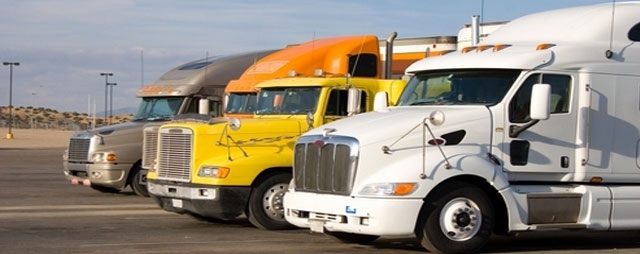
- Air Travel Insurance. Movement of goods by air is the youngest and most promising of all methods. Thus, small loads are usually transported. In order to transport larger facilities, it is possible to use charter flights of specialized aircraft. The insurance risk here is usually low, since this type of transport is considered the safest. Exceeding the maximum permissible mass of cargo in this case is unacceptable, since it threatens flight safety. For the same reason, the possibility of damage or loss of goods transported in this way is minimal. For some types of goods (for example, clothing, computer and other electronic equipment), the risk of theft is high, especially at intermediate points of stay during the trip to the destination.
- Sea cargo insurance. This type of transportation is associated with many risks, for example, damage during loading and unloading or transportation, adverse weather conditions. Despite the high degree of risk, in some cases shipping cargo by water is the only way to deliver it to its destination. Sea transportation allows the use of full and partial insurance of transported property. The second option involves insurance coverage of the cargo only on a separate section of the track. The amount of the premium under the contract here depends on the conditions of carriage, the length of the route, the number of intermediate points and other things.
- Rail insurance. Damage to property in the event of a wagon derailment or displacement as a result of maneuvers, as well as damage to it due to leakage, theft - these are the main risk situations associated with moving the cargo in this way.Their exact set for a specific insurance case is determined taking into account the nature of the cargo and vehicle.
- Car insurance. This method of transportation is considered the highest risk. This state of affairs is justified by the presence of a large number of road accidents and illegal actions by third parties. The size of the insurance premium here depends on the characteristics of the transportation route, such as a freight vehicle.
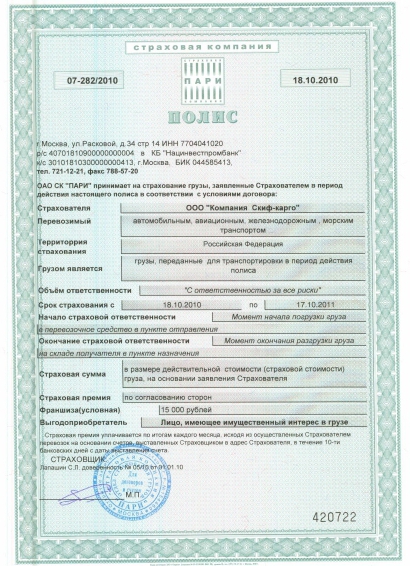
International Travel Insurance
The globalization of economic relations leads to an increase in the intensity of cargo transportation between different states. This type of transportation has its dangers, including the possibility of damage and loss of property, which may arise due to misunderstanding between representatives of different countries and, as a result, litigation, disputes and delays in delivery time. For this reason, international cargo insurance is actively used throughout the world.
There is an international code of trade rules called Incoterms, which also regulates insurance activities in this area. The object of the insurance contract can be both exported and imported property. In most cases, each party to a trade transaction insures the cargo during transportation on its part of the route of its movement, it usually occurs on the principle of "responsibility for all possible risks."
Features of dangerous goods insurance
Dangerous goods insurance due to the exceptional qualities and properties of transported objects is characterized by high risks. On the territory of the Russian Federation special rules and requirements are in place that determine the safety standards for the transportation of such property, however, the legality of its insurance protection is not currently provided for by law. Dangerous and especially dangerous substances and objects can act as an object.
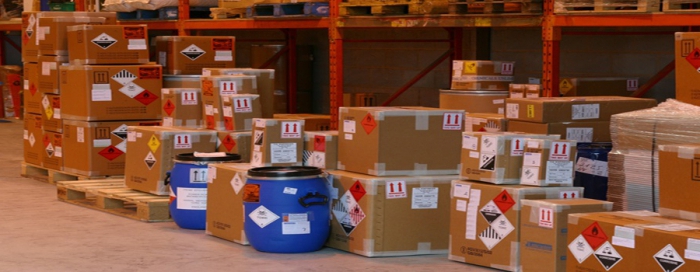
A distinctive feature of insurance of this kind of transportation is that, in addition to the classic coverage of the property itself, it also includes the responsibility of the insured to the environment and third parties. The volume of the latter is calculated depending on the maximum possible amount of harm done. Transport insurance of goods of this type suggests that the contract can be concluded on the basis of the following types of risks:
- Death or damage to goods.
- Damage to health or life, as well as damage and loss of property of third parties as a result of transportation activities.
- Environmental pollution.
Cargo liability insurance can be carried out both separately for each individual transportation, and for a certain number of them for a predetermined period of time.
Carrier Liability Insurance
In world practice carrier liability insurance cargo - a universally recognized mandatory rate of interaction between business entities. In our country, a slightly different situation has developed. Such protection of the interests of transport operators is voluntary. Also, such a decision as cargo insurance by a carrier can be made under pressure from customers. This is because not everyone wants to entrust the transportation of goods to the contractor without a liability insurance policy. Indeed, its presence provides some advantages for both parties:
- Upon the occurrence of an insured event due to the fault of the carrier, he will be guaranteed compensation for the damage caused.
- Increased confidence in a particular carrier as a real partner.
- The services for estimating the volume and ascertaining the reasons for the occurrence of the insured event are provided free of charge to the cargo owner.
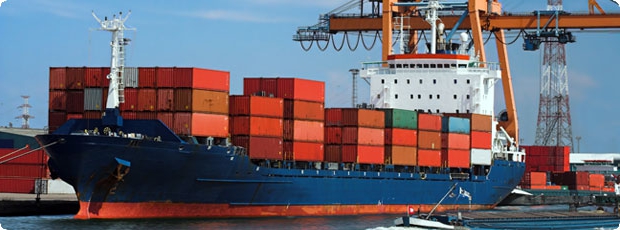
Damage, loss, loss of transported property, as well as losses of its owner associated with a delay or disruption of delivery due to the fault of the carrier are the main reasons for the onset of liability. It is also possible to insure the carrier’s liability against unintentional harm.
Insured event and payment
If the occurrence of one or more insured events under a previously concluded agreement on cargo insurance did occur, the policyholder must immediately notify the insurance company about this. Such preliminary information can be made in any way possible: by phone, fax or e-mail, without fail with the obligatory indication of the place and time of the incident, the alleged causes and amount of loss.
The official notification is a written statement about the occurrence of an insured event, which must be sent to the insurer by registered mail, courier delivery or by e-mail. The terms of its submission are different for each insurance company and should be in the range from 24 hours to 5 working days.
The policyholder is obliged to make every effort to ensure the safety of the property that is the subject of the contract until it is examined by an authorized representative of the insurer. He can also transfer the affected cargo from the scene if it is required to maintain the proper level of safety (provided that there is permission from the other side).

The insurer has the right to demand the provision of documents necessary to confirm the fact of validity and determine the features of the insured event, namely:
- Information about the policyholder (for individuals - a passport or other identity document, for legal entities - a certificate of registration and constituent documentation).
- Evidence of the existence of an insurance contract (original contract, insurance policy, notice of commencement of transportation, a duplicate of a document confirming the fact of payment of the insurance premium in full, application for insurance payment).
- Papers indicating the presence of property interest in the insurance object (set of sales contracts, invoices, invoices, invoices and other invoice documentation).
- Documents proving the fact of transportation (agreement with the transport company, application for transportation, accompanying transportation documentation).
- Papers certifying the occurrence of the insured event (the main one is the act of property shortage, the rest of the composition depends on the type of transportation).
- Documents substantiating the amount of damage caused. This is a calculation insurance amounts payments, expert opinions, photographs, etc.
- Documents confirming the exercise of the right of subrogation (copies of claims against the transport company, response letters and comments).
Conclusion
Cargo transport insurance provides for a two-week period from the date of receipt of all requested documents for an insured event to study all the circumstances of the case by the insurer and decide on consent to pay compensation under the contract. At the same time, the latter must notify the policyholder of the recognition of his claims or provide a written refusal with a detailed list of reasons. The amounts due under the contract must be transferred within 10 banking days, and a notification of the transfer is sent to their recipient. The day of withdrawal of funds from the account of the insurance company is considered the date of payment of insurance compensation.








